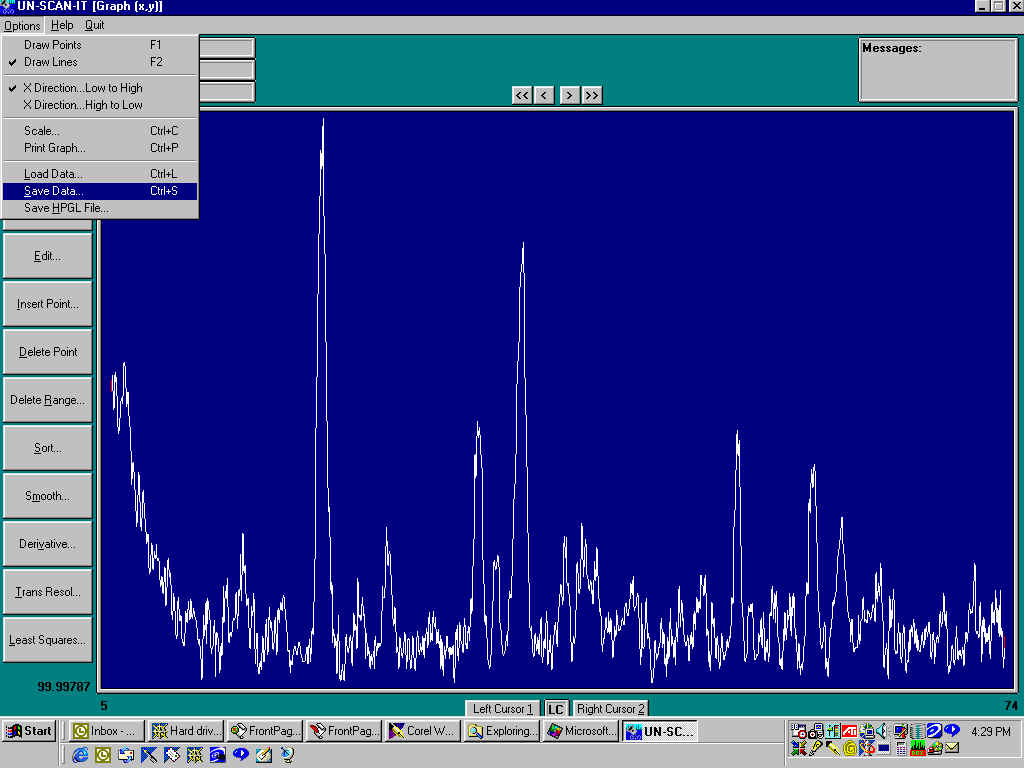
Before you can use the converted data with most software it has to be converted to fixed step intervals. The commercial software UnScanIt is (so far) the best program for this conversion. If any reader knows of a freeware or shareware program with comparable capabilities, I would like to know about it (Contact Henry Barwood).
Begin by loading the saved X-Y data that has been trimmed and intensity converted:

For ease of use, I usually go ahead and plot the data just to see if it looks acceptable:
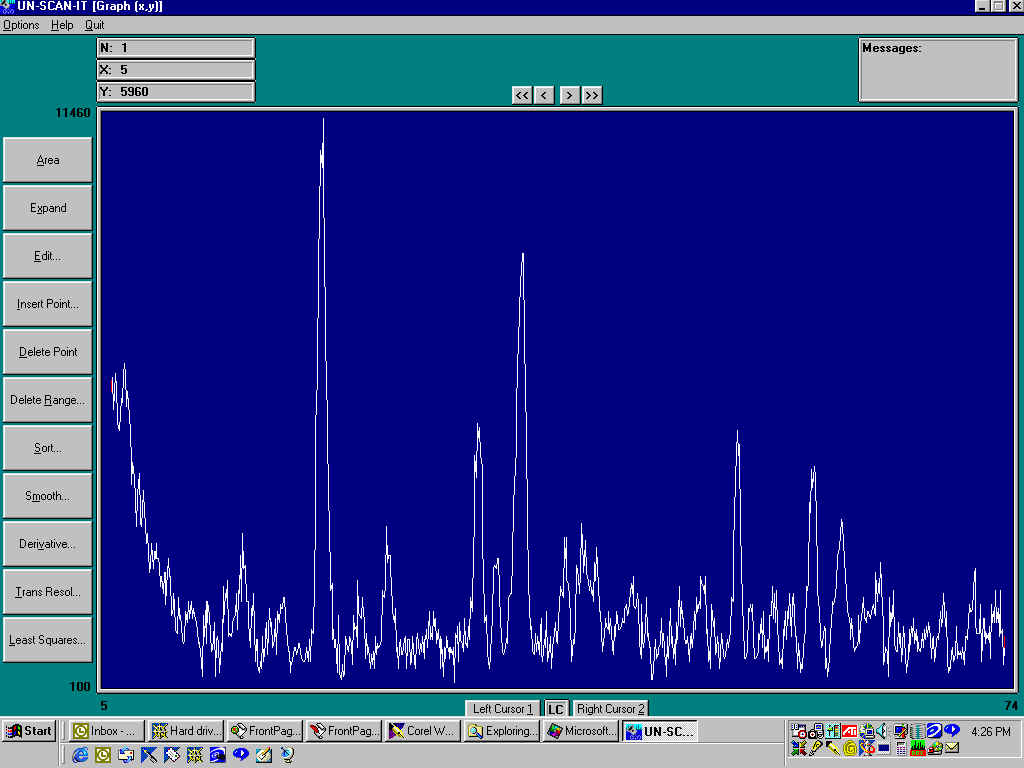
Using the Transform Resolution function button gives you a box asking for the new endpoints and step size:
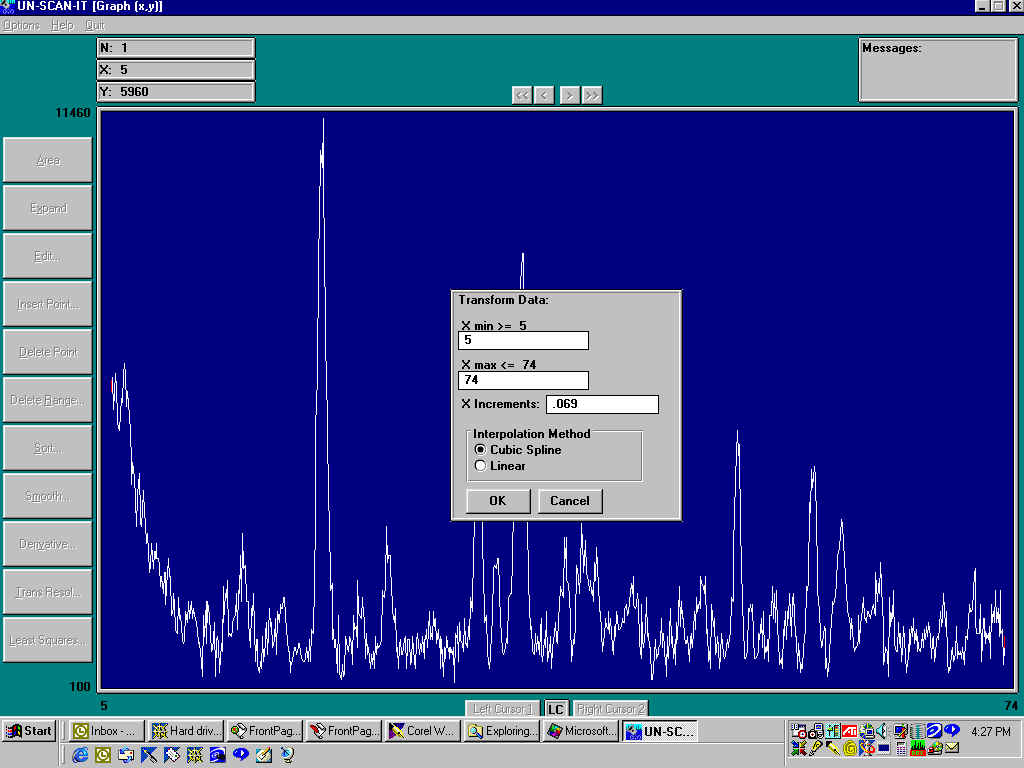
Change the step size to whatever is acceptable. In this case I've arbitrarily chosen a step of 0.02 degrees (Normally I would use 0.06, but this was a test case):
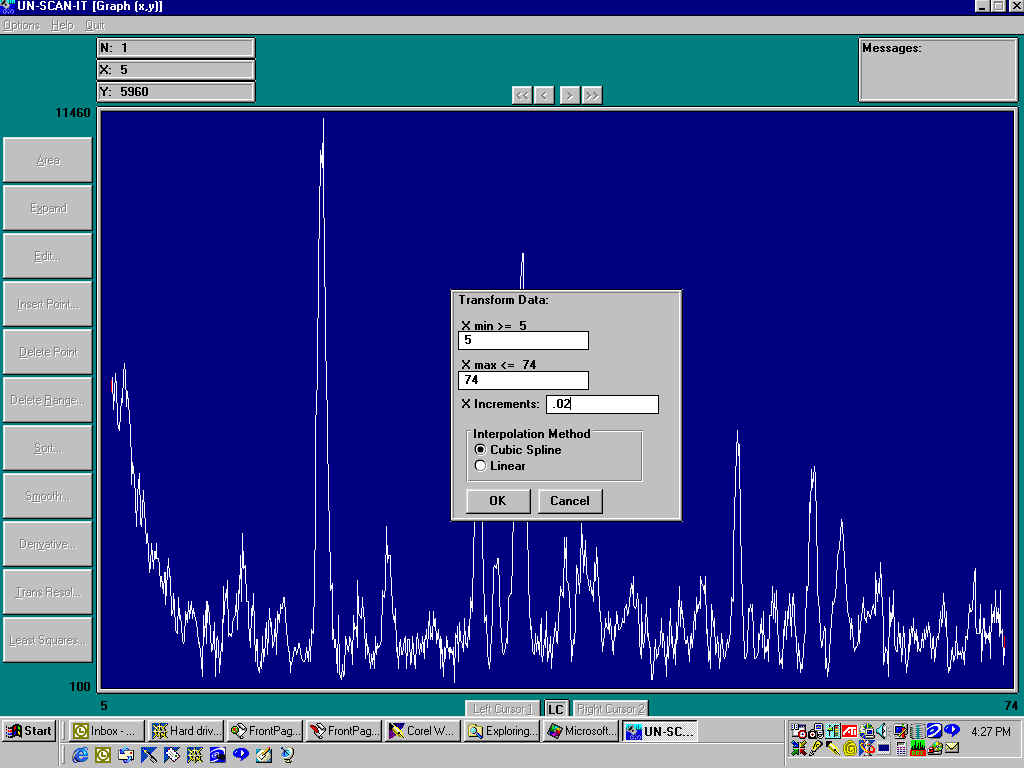
The program will transform the resolution and tell you the number of datapoints. This is important to know when editing the data for use in various programs:
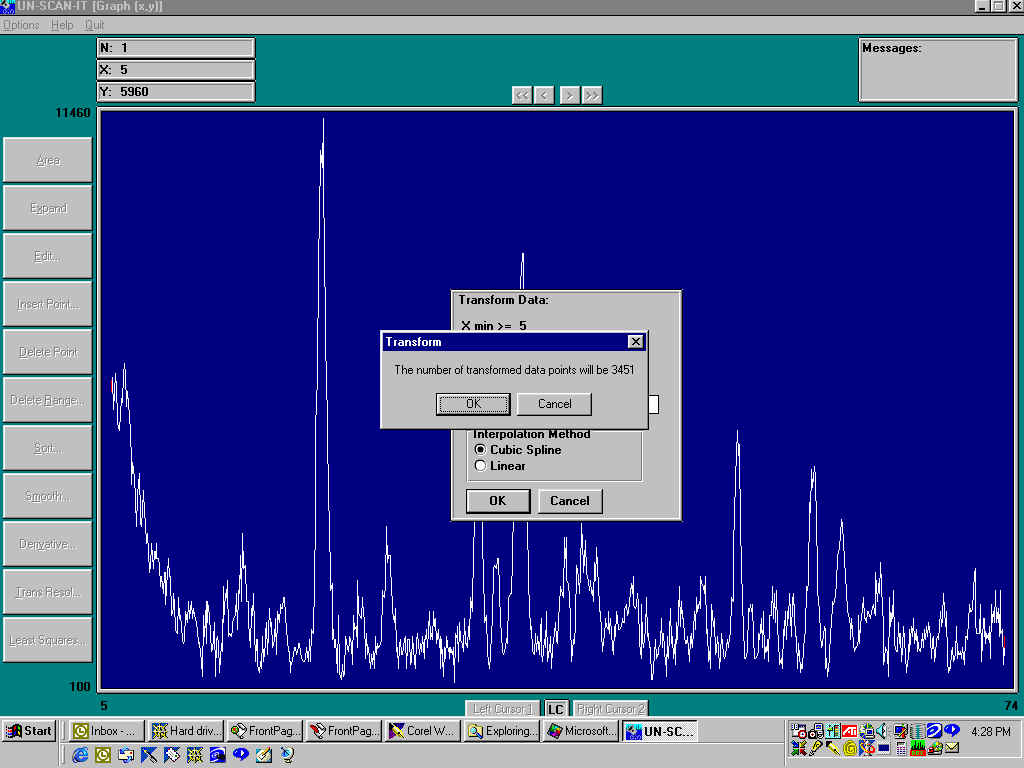
The program will now ask if you want to replace the original data, which you do:
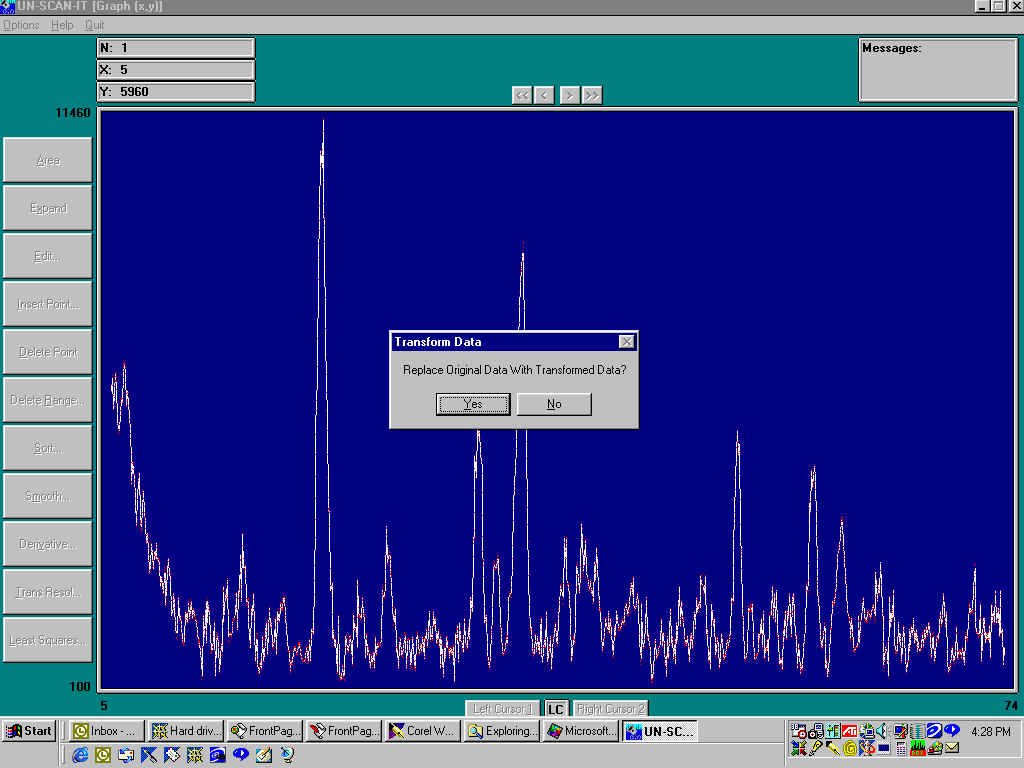
The program will now ask if you want to round the X values. Normally you would not so that the end points will be preserved, but some special cases you may want to round these values (if you scanned some odd interval and would like to make certain that the end points are OK).
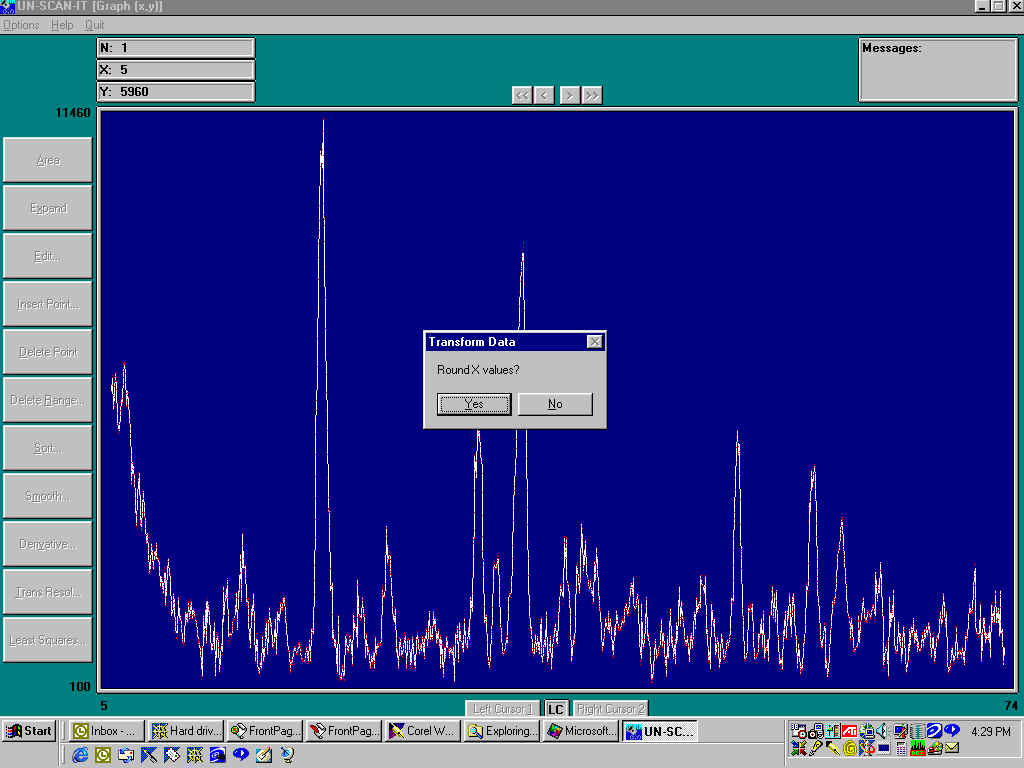
You must now save the data and you are ready to begin using the converted diffractogram:
